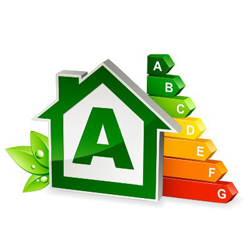
EFFICIENCY / HEATING POWER
What is good stove heating?
This is a slow combustion with which we control the fire. A good cassette, built-in or stove should retain heat instead of letting it escape through the chimney flue. Technically, slow combustion devices must be heat exchangers and good combustion producers. They must burn the wood correctly and must transmit the heat inside the house.
How big do we need our stove to be?
This will depend on: The size of the house or room; the insulation of the home; design; and the importance we give to flames or heat.
The European standard determines that 60-70 watts per m2 are needed with a height of 2.4 m from floor to ceiling.
Efficiency
The most important factors in terms of efficiency are: How airtight the stove is, the amount of radiation it can transmit through its surface, the type and dryness of the firewood, the insulation of the home and the way the stove is used. stove. An efficient stove will burn wood slowly. Combustion is controlled by regulating air flows within the combustion chamber.
Firewood is burned in three phases:
- water evaporation
- The wood turns into embers and gases
- The ember burns
Many stoves allow some gases to escape through the chimney without being completely burned. These gases can represent up to 60% of the warming potential that
has the firewood. To avoid this, the stove requires oxygen mixed with said gases at a temperature of at least 350o up to 600oC. Some stoves have designs that can
bring the secondary air to the combustion chamber in order to burn the gases that would otherwise escape through the chimney draft without burning, thus achieving
forms greater efficiency. A stove’s slow combustion is normally achieved by controlling the primary air. When we introduce the secondary air it
What we achieve is to burn gases and particles more efficiently with a lower temperature in the combustion chamber. This is what we know by the name “Clean Burn”, this technology will increase efficiency by almost 40%. To obtain higher efficiency the firewood must be dry. Wet or damp firewood, in addition to generating less energy, will also create much more soot and tar due to incomplete combustion.
- 1 Kg. firewood gives approx. 3800 W of contained energy (100% efficiency)
- 1 Kg. firewood that gives approx. 420 W (12% efficiency) is what we get when we burn wood in an open hearth.
- 1 Kg. firewood that gives approx. 1900 W (50% efficiency) is what we obtain with a device with a traditional combustion system.
- 1 Kg. firewood that gives approx. 2800 W (75% efficiency) is what we obtain with appliances with a clean combustion system – CB.
The amount of energy that we can obtain from firewood will depend on its humidity. Ideally, it should have only 20%, which would give approximately 2800 W per kg with an efficiency of 75%.
Dry firewood gives much more heat power although it lasts a little less.